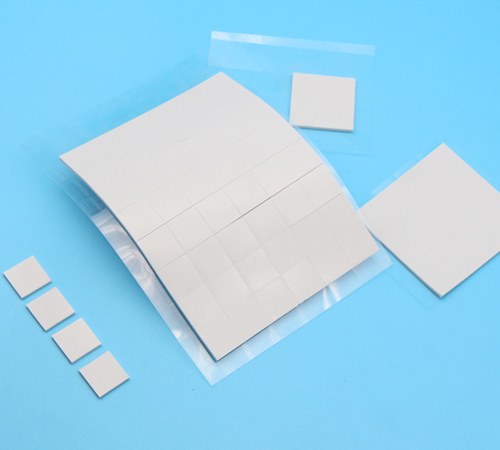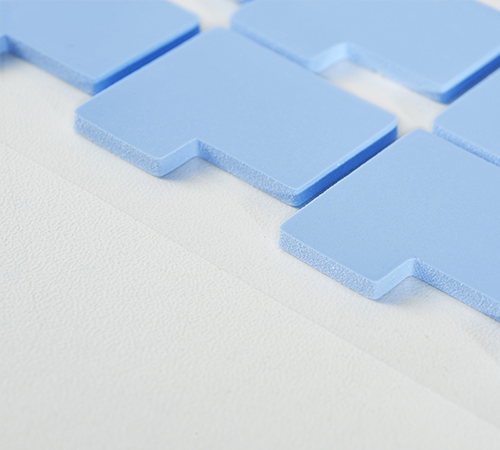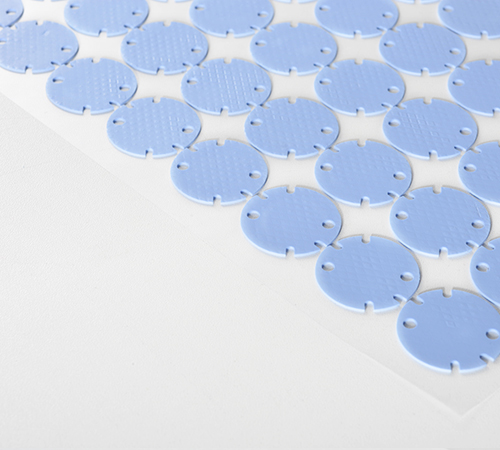Can Thermal Pads Absorb Shock? A Must-Read Guide for Engineers
Author:NFION
Date:2025-05-07 14:14:34
1. Introduction
In modern electronic thermal management systems, thermal silicone pads serve as critical thermal interface materials (TIMs). They are widely applied between high-heat components such as processors, power modules, and memory chips and their heat sinks to achieve efficient thermal transfer. However, beyond thermal conductivity, engineers often ask whether these pads also offer shock absorption. This article explores in depth whether thermal silicone pads provide vibration-damping properties, along with their potential and limitations in protecting electronic components from mechanical impact.
2. Material Composition and Basic Characteristics of Thermal Silicone Pads
Thermal silicone pads are typically composed of a silicone rubber matrix combined with thermally conductive fillers such as alumina, boron nitride, or zinc oxide. Their key properties include:
● Softness: The elastomeric structure allows them to conform to gaps between components.
● Compressibility: They can deform under pressure to fill microscopic surface imperfections, improving contact.
● Resilience: They exhibit a certain degree of rebound after compression.
These characteristics not only enhance thermal contact but also enable a degree of mechanical cushioning and shock absorption.
3. Shock Absorption Mechanism
3.1 Cushioning and Energy Dissipation
During transportation, drops, or long-term use, electronic devices may encounter mechanical shocks or vibrations. These can cause micro-movements, displacement, or stress concentration on components. Due to their elasticity and softness, thermal pads can:
● Mitigate mechanical stress between components and heat sinks;
● Distribute sudden impact forces to avoid localized damage;
● Absorb some vibration energy, thereby functioning as dampers.
3.2 Comparison with Traditional Shock Absorbing Materials
While thermal silicone pads possess some shock-damping capabilities, they are primarily designed for heat conduction. Compared with professional damping materials such as rubber pads, foam, or EVA:
|
Material Type |
Thermal Conductivity |
Shock Absorption |
Application Focus |
|
Thermal Silicone Pad |
High (1–12 W/m·K) |
Moderate |
Heat transfer + basic cushioning |
|
Rubber Shock Pad |
Low (<0.5 W/m·K) |
High |
Mechanical cushioning |
|
EVA Foam |
Very Low |
Very High |
Vibration isolation & gap filling |
Thermal silicone pads offer auxiliary shock absorption but cannot replace dedicated damping materials. For scenarios demanding both heat dissipation and vibration protection, engineers should consider layered structures or hybrid solutions.
4. Performance in Typical Applications
4.1 Communication Equipment
In 5G base stations and industrial routers, thermal pads installed between processors and heatsinks help reduce mechanical stress during vibration, protecting solder joints and thermal interfaces.
4.2 Automotive Electronics
In car infotainment systems, camera modules, and control units—where vibration is frequent—thermal pads offer moderate damping. However, in cases of strong impacts or collisions, additional shock protection is needed.
4.3 Wearable Devices
Smartwatches and VR devices demand lightweight and compact materials. Thermal pads, due to their flexibility, offer slight vibration buffering while maintaining thermal performance.
5. Optimization Suggestions
If a design requires both thermal conductivity and vibration absorption, consider:
● Using lower Shore 00 hardness pads for enhanced softness;
● Selecting high-rebound formulations to increase elasticity;
● Combining with other materials, such as a foam backing layer or mechanical bracket;
● Avoiding over-compression, which limits deformation space.
For environments with strong shock or prolonged vibration, thermal pads should be used alongside professional damping structures.
6. Conclusion
While thermal silicone pads are primarily designed for heat dissipation, their elastic and soft properties enable them to offer basic cushioning and vibration-damping effects. These properties help protect components from micro-shocks in certain applications. However, their shock absorption capacity is limited and cannot replace professional damping materials. Engineers should take a comprehensive approach by optimizing both material selection and structural design to ensure system stability and protection.
 CN >
CN >



